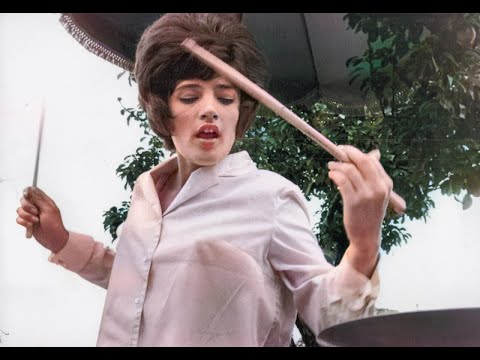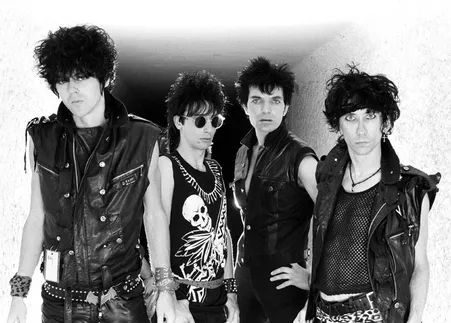In the realm of art, there exists a category that defies traditional labels and challenges societal norms. It is known as outsider art, a genre that emerged from the depths of unconventional minds and flourished with raw, unfiltered creativity. Within this realm, we find the enigmatic figures of Syd Barrett, Captain Beefheart, Roky Erickson, and Arthur Lee, whose works exemplify the perplexing and captivating nature of outsider art.
Syd Barrett, the brilliant but troubled co-founder of Pink Floyd, was a prime example of an artist who pushed the boundaries of conventional music. His ethereal melodies and cryptic lyrics forged a path into uncharted sonic territory. Barrett’s whimsical and psychedelic compositions, such as “Arnold Layne” and “See Emily Play,” captivated audiences with their dreamlike qualities. However, his mental health struggles ultimately led to his departure from the music scene, leaving behind a legacy that still fascinates and influences artists to this day.
Captain Beefheart, the eccentric pseudonym of Don Van Vliet, was a true maverick in the realm of music. His avant-garde approach to rock and blues fused dissonant rhythms and abstract lyrics, creating a sonic landscape that defied categorization. Albums like “Trout Mask Replica” and “Safe as Milk” challenged listeners, demanding their active engagement to decipher the cryptic narratives within. Beefheart’s unconventional methods and relentless pursuit of artistic freedom solidified his place as an outsider art icon.
Roky Erickson, the frontman of the 13th Floor Elevators, broke through barriers with his distinct blend of rock, psychedelic, and horror-tinged lyrics. His haunting vocals and introspective songwriting, showcased in tracks like “You’re Gonna Miss Me” and “Two-Headed Dog,” exemplified the emotional depths of outsider art. Erickson’s battle with mental health issues and subsequent institutionalization only added to the mystique surrounding his music, making him a beloved figure among aficionados of unconventional art.
Arthur Lee, the enigmatic leader of the band Love, crafted a unique sound that defied the conventions of 1960s rock. With albums like “Forever Changes” and “Da Capo,” Lee showcased his ability to seamlessly blend folk, rock, and orchestral elements, creating a musical tapestry that transcended genres. His introspective lyrics and melancholic melodies invited listeners into a world of emotional complexity. Lee’s tumultuous personal life and unconventional approach to music solidified his status as an outsider artist of unparalleled depth.
While the art produced by these visionaries may be challenging at times, it is precisely this difficulty that makes their work incredibly engaging. Outsider art invites us to question our preconceived notions, challenging us to explore unfamiliar territories of thought and emotion. It is a testament to the power of creativity unhinged from societal constraints.
The influence of outsider art did not end with these extraordinary individuals. They paved the way for a new generation of artists who followed in their footsteps, carrying the torch of unconventional expression. Figures like Tom Waits, with his gravelly voice and unconventional instrumentation, continued to push the boundaries of musical storytelling. Jeffrey Lee Pearce, the tortured soul behind The Gun Club, combined punk, blues, and country to create a sound that defied categorization. Robyn Hitchcock, with his whimsical lyrics and distinctive songcraft, became a torchbearer for the tradition of outsider art.
Outsider art has evolved and transformed over time, but its essence remains intact, an unyielding desire to create without compromise. Artists like Syd Barrett, Captain Beefheart, Roky Erickson, and
Arthur Lee served as catalysts for this movement, leaving an indelible mark on the artistic landscape. Their unconventional approach continues to inspire and resonate with audiences, reminding us of the boundless possibilities that lie beyond the confines of mainstream art.
In the ever-evolving realm of outsider art, we are continually reminded of the power of embracing the unconventional and venturing into uncharted territories of creativity. Artists like Skip Spence and Wild Man Fischer further exemplify the fascinating and often challenging nature of this genre. Skip Spence, a founding member of Moby Grape, embarked on a solo career that showcased his fragmented and deeply personal style. His album “Oar,” recorded during a period of personal turmoil, remains a cult classic, celebrated for its raw honesty and unfiltered expression. Wild Man Fischer, a street performer with mental health challenges, captured attention with his off-kilter and unpredictable musical performances. Despite the perceived difficulty of their art, these artists draw us in with their genuine and unapologetic approach.
As the legacy of outsider art continues to unfold, we witness the emergence of natural successors who carry the torch and push the boundaries of creativity. Tom Waits, with his gravelly voice and penchant for storytelling, effortlessly embodies the spirit of outsider art. His compositions, ranging from smoky ballads to experimental jazz-infused tunes, invite listeners into a world of gritty characters and unconventional narratives. Jeffrey Lee Pearce, the influential frontman of The Gun Club, combined punk, blues, and Americana, creating a sound that defied categorization and resonated with a dedicated fan base. Robyn Hitchcock, with his whimsical lyrics and idiosyncratic melodies, weaves together a tapestry of surrealistic imagery and introspective musings, further solidifying his status as an outsider art icon.
The evolution and impact of outsider art continue to be felt across various artistic disciplines, from music to visual arts and beyond. Its ability to challenge, provoke, and captivate is a testament to the enduring power of unfiltered creativity. As we delve deeper into the works of Syd Barrett, Captain Beefheart, Roky Erickson, and Arthur Lee, we are reminded that artistry knows no boundaries and that true genius often lies just beyond the fringes of convention.
In the realm of outsider art, where difficulty and engagement coexist, these remarkable individuals have left an indelible mark. Their works, often shrouded in mystery and veiled in complexity, invite us to embrace the unconventional, to explore the depths of human expression, and to challenge the status quo. They serve as a reminder that art, in its purest form, is a journey into the unknown, a realm where the familiar is shattered, and the extraordinary emerges.


